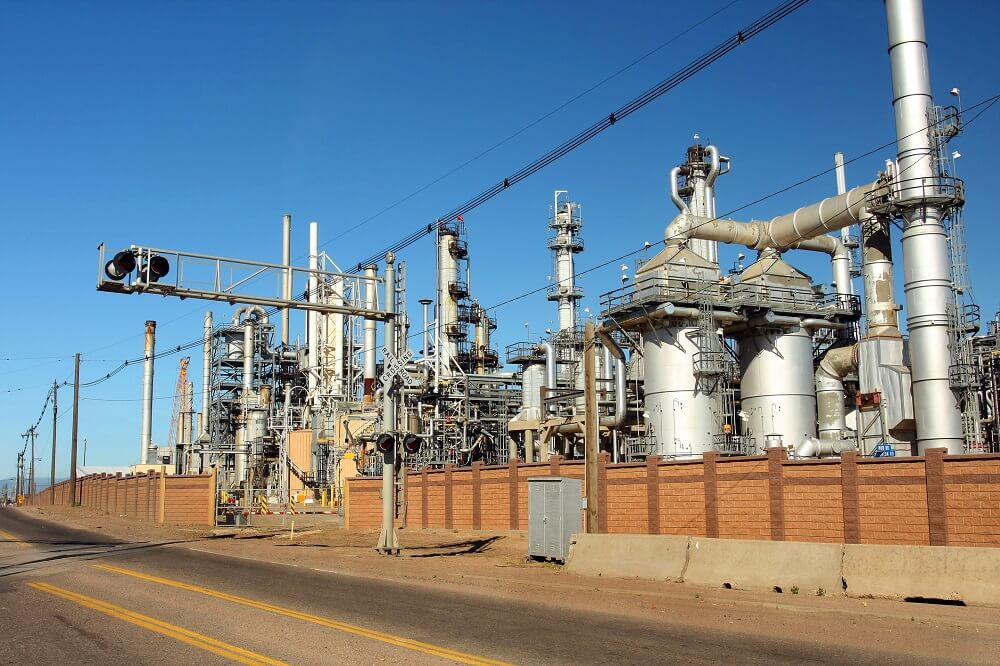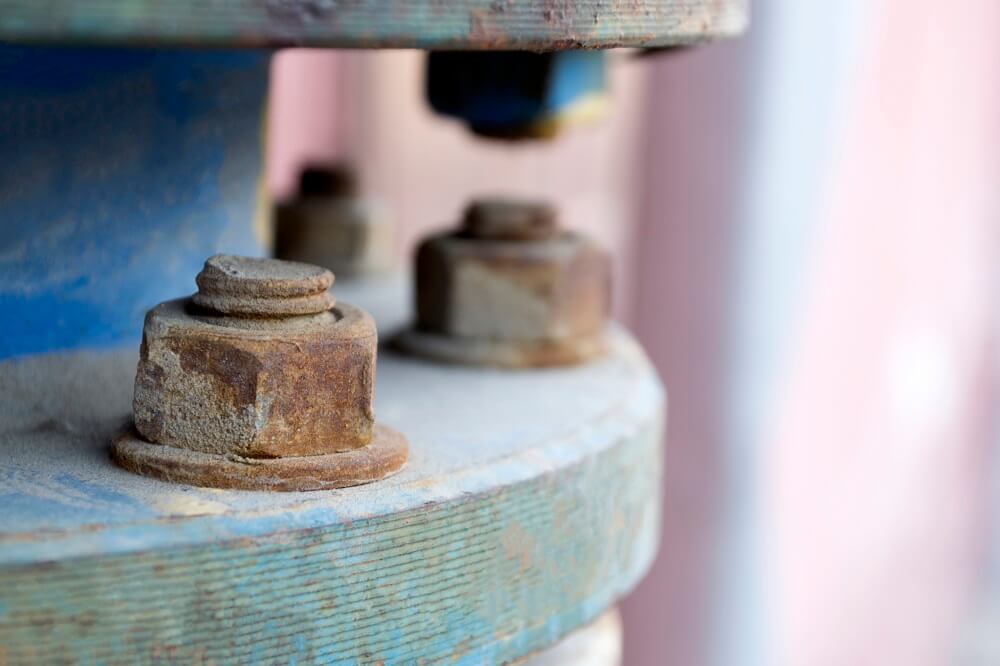Carbon fiber reinforced composites (CFRC)are a sort of advanced material used in the aerospace, automobile, marine and sport industries. Their use is growing drastically because of their fantastic properties, particularly their high strength and low weight.
Here we'll explain the properties of carboncompositesand look at thegalvanic corrosionof metals when they are electrically connected to carbon fiber reinforced composites.
Properties of Carbon Composites: Mass Density, Specific Strength and Yield Strength
We’ve heard aboutaluminumand its alloys as light metals that are very suitable for use in the aerospace and automotive industries. But for a materials engineer who wants to select an adequate material for a given application, it is not themass densitythat's important throughout thematerial selection.
In fact, the important issue is a concept calledspecific strength, which is defined as a ratio of a material'syield strengthto itsmass density.
Figure 1. Video about the desirable physical characteristics of carbon fiber composite materials.
Engineers are always looking for a material with a high specific strength along with a low mass density. The following table compares the specific strength of different industrial materials.
| Material |
Mass density (g/cm3) |
Tensile Strength (MPa) |
Specific Strength (kN.m/kg) |
| Aluminum 7075-T6 |
2.8 |
600 |
214 |
| Magnesium alloy AZ91D |
1.7 |
230 |
135 |
| Titanium |
4.4 |
950 |
216 |
| Carbon Steel (0.45 % C) |
7.8 |
850 |
108 |
| Maraging Steel |
8.1 |
2500 |
300 |
| Carbon composite |
1.6 |
1240 |
785 |
Table 1: A comparison of mechanical strength, mass density and specific strength of different industrial materials.
The materials with a high strength and low mass density provide a high specific strength and are ideal for engineers. It can be seen that carbon fiber reinforced composites possess the highest specific strength. The specific strength of carbon composites are at least two times more thanmaraging steel, which is characterized with the highest strength among all types of steels.
This means that for a certain required strength, the weight of a component is reduced to half if CFRC is used instead of maraging steel. For automotive applications, this means a lighter vehicle that consumes less fuel. Low裂纹扩展due to impact or fatigue, the ability to produce in desirable directionalmechanical properties, and being cost-effective in mass production are the other highlighted properties of carbon-reinforced-polymer composites.
As a result, this material is considered to be an advanced structural material.
All of the above-mentioned properties of carbon fiber reinforcedpolymersmake this material a potential candidate for automobile, aerospace, infrastructure and marine applications. (To learn more about the properties of carbon fiber, read10 Things to Know About Carbon Fiber Reinforced Polymer and Corrosion.)

Figure 2.Carbon composite materials are lighter and strongerthan traditional materials such as aluminum and steel.
Carbon Composites' Drawbacks
Despite all of the excellent properties of CFRCs, there are issues with using carbon fiberreinforced compositesand metals together. The carbon fibers in CFRPs cause this material to becomeelectrically conductive. The carbon fibers are electrically conductive and electrochemically verynoble. Therefore, when a metal is electrically connected to a CFRP, it is more susceptible to galvanic corrosion. (To learn more about galvanic corrosion, readAn Introduction to the Galvanic Series: Galvanic Compatibility and Corrosion.)
There are five conditionswhich need to be metfor galvanic corrrosion to occur between a metal and the composite material:
- An actively corroding metal
- An electrically conductive composite (usually carbon fiber)
- An electrical connection between the composite and the metal
- An electrolyte (usually salt water)
- The presence of oxygen
This situation becomes worsewhen a large surface area of carbon composite components is coupled to small metallic parts (such asfasteners, bolts and nuts). In these circumstances, the rate of galvanic corrosion is extremely high due to the highcathodetoanodesurface area ratio (Ac/Aa).
The galvanic corrosion of metals coupled to carbon composites is not a new issue. It has been reported since the 1960s. But this issue has not been resolved yet. The morphology and intensity of the galvanic corrosion strongly depends on the type of metal connected to the carbon composite, cathode-to-anode surface area ratio, and environmental conditions. (For further discussion, seeWhy Do Two Dissimilar Metals Cause Corrosion?)
In the following section, the behavior ofdissimilar metalsin this situation will be discussed in more detail.
Aluminum Coupled to Carbon Composite
Aluminumalloysare extremely vulnerable when they are coupled to a carbon composite. According to the anodic and cathodicpolarization curvesof aluminum alloys and carbon composites, it is clear that the rate of galvanic corrosion in seawater is controlled by the oxygenreductionreaction.
What this means is that any condition that leads to an increase in the rate of oxygen reductionwill cause an increase in the rate of galvanic corrosion. During the galvanic corrosion, a white, jelly corrosion product will be formed on the surface of the aluminum.
There is an assertion that the galvaniccorrosion rateof aluminum could be mitigated by theanodizationof aluminum and the formation of a thick, protective aluminumoxide layeron the surface. However, it has to be mentioned that in the case of a breach of the oxide layer by mechanical damage, the situation becomes much worse due to a really high cathode-to-anode surface area ratio (Ac/Aa).
Plain Steel
The galvanic corrosion rate ofmild steelcoupled to a carbon composite has been investigated in different environments: concrete, deicing solution and seawater. The results show that much like aluminum, the corrosion rate of plain steel is controlled by an O2cathodic reaction. Sometimes the corrosion rate of plain steel increases by a factor of 25 and 60 when it is coupled with a carbon composite in deicing solution and seawater, respectively.
Stainless Steel
There is no evidence of the formation ofcorrosion for stainless steelscoupled to carbon composite. However, it is reported that some types of stainless steels (such as types 410 or 301) are susceptible tolocalized corrosion(pitting corrosionandcrevice corrosion) when they are connected to a carbon composite in aerated 3.5% NaCl (simulated seawater). It is believed that the pitting corrosion will be enhanced by increasing Ac/Aa. (For more information about pitting corrosion, seeA Look at High Nitrogen Stainless Steels.)
Titanium
By looking at the standardelectrochemical potentialoftitanium, it seems that this metal is anactive metal. However because of the formation of a dense stable and protective oxide layer, titanium is placed among the noble materials and just below graphite or carbon in thegalvanic seriestable. (For a primer, see the articleAn Introduction to the Galvanic Series: Galvanic Compatibility and Corrosion.)
Therefore, there is no significant gap between titanium and carbon-fiber-reinforced composite to create galvanic corrosion. This means that commercially pure titanium and its alloys are completely resistant to galvanic corrosion when they are coupled with carbon composites.
Are Carbon Composites Safe When Coupled with Metals?
The galvanic coupling of metals to carbon composites will not only cause problems for the metal, but also for the composite itself. Due to the hydrogen gas evolution in defect sites of the composite (such as voids and cracks), hydrogen-filledblisterscan form on the composite surface. (Discover more inThe Corrosion of Polymeric Materials.)
另一个问题,可能是碳的问题composites as a cathode in agalvanic coupleis the formation ofcalcareous depositson the surface of the carbon composite. In stagnant seawater, a huge number of cathodic reactions happen on the surface of carbon fibers, includinghydrogen evolutionand oxygen reduction, which can lead to the creation of a localized alkaline solution on the surface.
In this condition, the carbonate salts in seawater are not soluble and will deposit in the form of the aragonite phase (calcium and magnesium carbonate). Becausea high hydrogen reduction rate is neededto create suchcalcareousdeposits, this phenomenon happens when an active metal, such as aluminum or magnesium, is connected to a composite material.
How to Mitigate the Corrosion of Metals Connected to Carbon Composites
Here are some remedies to control the galvanic corrosion of metals connected to carbon composites:
- Substitute the metallic part with a high-corrosion resistance alloy. In this case, the best option is titanium and its alloys.
- 断开电气连接的两个部分by placing an electrically insulating material, such asfiber-glass-reinforced composite, between those parts.
- Useepoxy resinswithout anyhydrolysablelinkage, such as ester bonds, to mitigate water penetration into the composite and then to decrease the real cathodic surface area.
- Usesizing agentsas a sealant on the surface of the carbon fibers before fabricating composites.
- A combination of sulfuric acid anodizing and a hybrid sol-gel coatingis quite effective against galvanic corrosionin carbon fiber metal laminates.
Testing Method for Galvanic Corrosion of Composites and Metal Assemblies
TheISO/DIS 21746(en) standarddefines the testing method for galvanic corrosion of composites and metal assemblies subject to asalt spray environmentusing a bonded or fastened specimen.
The potential benefits to CFRP-metal users of implementing a galvanic corrosion test based on this standard are:
- Addressing the corrosion risks related to CFRPs of drastically nobler galvanic potential than metals to form a global cell between the CFRP and the metal
- Expanding CFRP applications to include corrosive environments that still require the inclusion of metallic components
- The detection or the prevention of galvanic current insulation loss, such as ion migration and time-related degradation in sealant film, injected caulking layer andglass fiber reinforced plastics (GFRPs)
- Demonstrating conformity to specified conditions for type certification requirements for aircraft
- Evaluating the corrosion related procedures for maintenance, repair and overhaul (MRO) of CFRP aircraft










